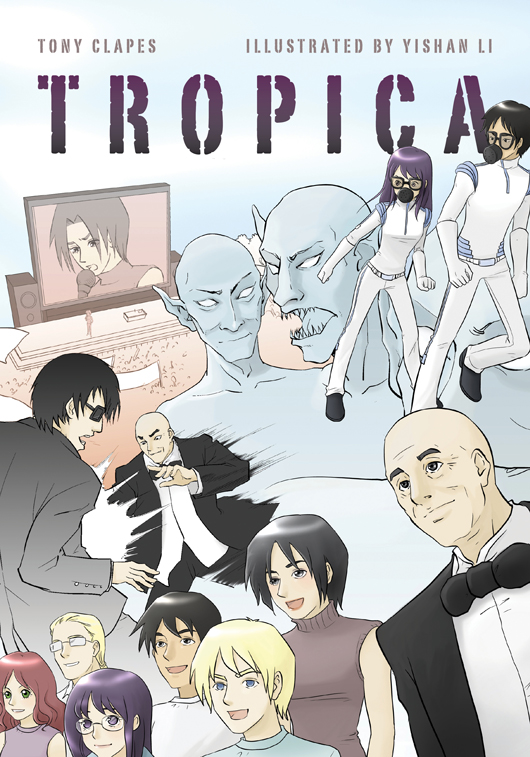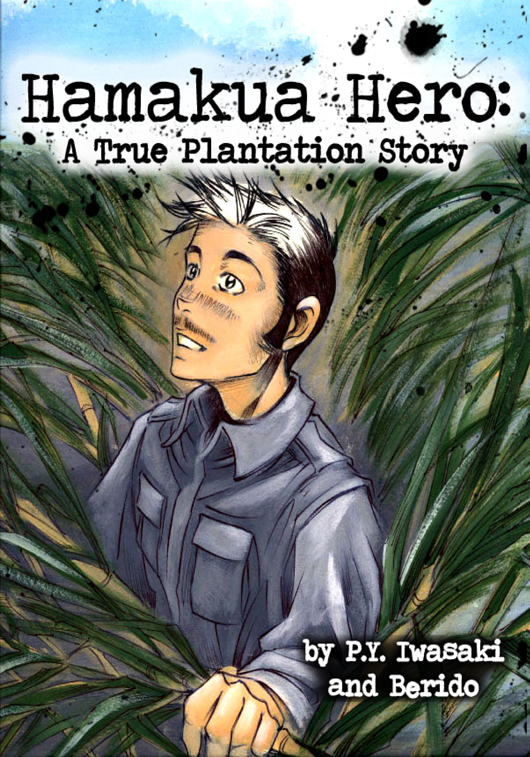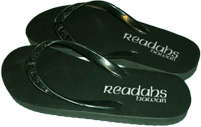Happy Teen Read Week! If you haven’t heard, Oct. 17-23 is Teen Read Week, sponsored by the Young Adult Library Services Association which is a division of the American Library Association. Teen Read Week is a national literacy initiative aimed at teens, their parents, librarians, educators, booksellers and other concerned adults. Find out everything you want to know about this program on the YALSA website.
The Hawaii State Library has been celebrating Teen Read Week with a plethora of special events. You can find out more about Hawaii’s Fall line-up of special programs for children and teens at librarieshawaii.org.
Of course, we here at Hawaii Book Blog wanted to do some book reviews and recs for you to help commemorate this initiative. Bess Press recently released a number of new books earlier this month (see: “New Books This Fall From Bess Press”). Included among those books were two graphic novels, Tropica and Hamakua Hero. In honor of Teen Read Week, I thought it might be fun to review them, since graphic novels and manga are two of the most popular items of literature for kids and young adults.
 Tropica
Tropica
This is a graphic novel by author Tony Clapes, illustrated by Yishan Li. The story takes place in a state known as Tropica. It’s glaringly obvious that Tropica is Hawaii, despite any explanation to obscure that fact. Tropica is an island state in the middle of the “Western Ocean, many miles from such cities as San Frano, Kotyo, Jeibing and Pingasore”. Similar to Hawaii this archipelago’s economy was supported primarily through sugar plantations in the past and tourism and the military in the present. In fact the main character, Dr. Nova, a sort of Professor X mentor of children states that “tourism…makes all of Tropica the new plantation and government is the new plantation boss.” Heavy stuff for a comic book, and it doesn’t let up for the entire book.
Tropica is more of an illustrated message than an earnest attempt at creating an interesting graphic novel. The message being that the current people in power are blind to the fact that the tourism and military gravy boats can’t last forever and that to succeed Tropica needs to invest its human capital in STEM (Science, Technology, Engineering, Math) based products. The problem with this graphic novel is that the message constantly hits you in the face at the expense of a cohesive story and viable characters. Although the beginning of the book has a cute profile on the six young apprentices, they are all but interchangeable in the midst of this storied mess. The illustrations are decent, if a bit static, drawn in a plain manga style.
Still, I have to give the creators some credit for trying to make something with a message that’s different from what you might normally see. Government, in this case, is a bit of an enemy here irregardless of party affiliation. In this day and age of low approval rates for our elected officials, it’s a message that I’m sure resonates with more than a few people.
I also applaud the creators for trying to empower youth to think of politics from different perspectives, that the future is theirs to shape and that they don’t have to continue down the path of the current power structure if they feel that it’s leading down a dangerous road—they can blaze their own trails. Whether you agree with it or not, it’s good to inject these kinds of ideas into the children who’ll be running things in the future. For this reason, Tropica can best be used as a tool to engage youth in thinking critically about these kinds of hot topics in Hawaii, even if I personally don’t find it engaging as a graphic novel.
You might find it interesting to note that Tony Clapes, the author, was a 2010 non-partisan candidate for Governor of Hawaii. You can check out his website at tonyclapes.net.
 Hamakua Hero: A True Plantation Story
Hamakua Hero: A True Plantation Story
In contrast to Tropica, Hamakua Hero: A True Plantation Story is a graphic novel that does not dwell on possible hardships for the future, but reminisces on the difficulties of Hawaii’s plantation past.
Hamakua Hero, by P.Y. Iwasaki and Berido, tells the true-life tale of Katsu Goto, a Japanese immigrant who came to Hawaii for a better opportunity. Goto was a smart man, and after working three years of indentured service for O’okala Sugar Plantation, he opened his own general store in Honokaa—the first Japanese store-owner in the region. A highly intelligent man, he naturally became a community leader and liaison between Japanese workers and plantation management. Feeling his influence was having a negative affect on plantation unrest and due to the success of his general store competing with others in the area, Goto was murdered and symbolically hung from a telephone pole, effectually martyring him to the Japanese immigrant populace.
I had not heard of this story before, but it was fascinating to read, yet very sad. It seemed like Katsu Goto could have had a prosperous life in Hawaii and accomplished much for his countrymen. I am very impressed that this slice of Hawaii history was made into a graphic novel. The book itself, like Tropica, is slightly stiff and rough around the edges, however, the underlying message and the attempt to help educate children through graphic novels is spectacular and I feel it flows much better than Tropica. The artwork is simple and sparse yet very dynamic on the page, much more so than the previous comic.
The retelling of Goto’s story is done well, although there are some narrative boxes that have a little too much small text to read. This is few and far between, however, as most of the story is told through simpler narration and dialogue. A lot of Japanese words, customs and images are sprinkled throughout the tale, each with an asterisk explaining its meaning in English. The author even included a fun hidden items game, much like old Highlights magazines, where you must find specific cultural items throughout the comic book.
I’d love to see more of these efforts made in Hawaii, I think this medium has strong potential to help gain students’ interests in the history, politics and culture of our islands and the people who inhabit it. Overall, Hamakua Hero does a great job of drawing you in through the graphic novel medium and teaching you about history. Tropica has a fascinating message, and tries really hard to get it across to the reader, but I think a more subtle, entertaining approach would have benefited it. Still, the potential is there and I hope this only encourages more local writers, illustrators and publishers to dive into the world of graphic novels. Bravo to Bess Press for doing so!
Book Event!
The Hilo Public Library will host local author Patsy Y. Iwasaki in a special presentation entitled, “A Walk with Katsu Goto: One Man’s Japanese-Hawaii Immigrant Experience” on Saturday, October 23. This program will be held in the Library’s Children’s Room beginning at 3:30 p.m. and admission is free.
Tropica
By Tony Clapes
Illustrated by Yishan Li
Bess Press, 2010
128 pages
Hamakua Hero: A True Plantation Story
By Patsy Y. Iwasaki
Art by Berido
Bess Press, 2010
80 pages
Disclaimer: We received complimentary copies of the books above from the publisher in exchange for our honest review.




